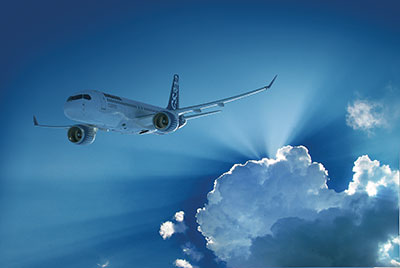
Features
Aircraft manufacturers
At The Gate: CSeries set to shake up the market
While a decision by Bombardier to offer as many as 160 seats on the larger of its two new CSeries aircraft was made to attract orders from low-cost airlines
May 6, 2013 By Brian Dunn
While a decision by Bombardier to offer as many as 160 seats on the larger of its two new CSeries aircraft was made to attract orders from low-cost airlines, it will also attract attention from Boeing and Airbus as the company encroaches further on territory long held by its bigger rivals.
 |
|
| In addition to stretching the fuselage by a seat-row, Bombardier will install a second pair of over-wing exits and increase the maximum take-off weight to carry more fuel and preserve a range of 2,950 nautical miles. Photo: Bombardier
|
The announcement came during the unveiling of Bombardier’s highly anticipated CSeries amid much fanfare at its Mirabel, Que., facility, north of Montreal. The event marks the first time since 1987 that any company has rolled out an all-new, single-aisle plane in the smallest category of mainline passenger jets.
Bombardier said its main focus will continue to be on development and marketing of the CSeries 100 and 300 aircraft for the 100- to 149-seat market segment, but customer interest and market trends prompted it to offer the higher capacity option.
“Simply, the more seats you make available, the better the seat costs,” Mike Arcamone, president of Bombardier Commercial Aerospace, said at the unveiling. “We made the economics today even better.”
The decision to go to 160 seats is a crucial play to win orders from low-cost carriers and puts pressure on Airbus’s A319, which has a standard configuration of 124 seats but can hold up to 156 passengers. Boeing’s 737-800, slightly bigger than the 737-700, can seat 162 passengers in a two-cabin format, or 189 in one class.
In addition to stretching the fuselage by a seat-row, Bombardier will install a second pair of over-wing exits and increase the maximum take-off weight to carry more fuel and preserve a range of 2,950 nautical miles. For the first time in the industry, customers will be able to have the extra exits installed during production or retrofitted in service to increase capacity, noted Robert Dewar, vice-president and general manager of the CSeries program. Structural provisions for the second pair of over-wing exits will be built into the basic aircraft.
Arcamone said the 160-seat version will have a cash operating cost per seat that is eight per cent lower than the baseline 135-seat CS300. Dewar said the 160-seat model will have the same seat-mile cost as a 180-seat aircraft so that airlines that cannot fill the larger aircraft can still have the same cost advantage.
According to Dewar, the CSeries flexibility is “unmatched,” including a smaller noise footprint for noise sensitive airports like London’s City Airport. “It has the best-in-class cabin comfort and flexibility. And it has a game-changing engine [Pratt & Whitney PW 1500G] for a game changing aircraft with a 20 per cent fuel burn advantage and 15 per cent less emissions.”
However, the seat pitch will drop from 32 inches on the base model to 28 inches on the 160-seat version. Ergonomic improvements like the enhanced curvature of the seat should mitigate the difference.
A report by Bloomberg News suggested orders for the CSeries are lagging, at only 180 aircraft, and series would need a 67 per cent increase in orders to meet a goal of 300 by mid-2014. But Arcamone maintained that orders are on target.
He repeated the company is looking at 300 firm orders by 2014 from 20 customers from geographically mixed clients from major airlines, leasing firms and low-cost carriers.
Arcamone noted that the three latest CSeries customers “have come in rapid succession since December” from airBaltic, Russian leasing firm Ilyushin Finance Co. and an unidentified client.
“We have 15 months before we go into service and we are confident we will reach our forecasts,” said Arcamone.
When one analyst suggested that Bombardier has been less aggressive in its marketing than either Boeing or Airbus, Arcamone noted that unlike its rivals, the CSeries is a completely new aircraft and not a re-engineered one.
Analysts seemed bullish on the CSeries in reports to clients after many of them saw the first-test vehicle during a tour of the Mirabel plant.
“First flight [slated for the end of June] will be a trigger point for some airlines to order,” wrote Cameron Doerksen of National Bank Financial in Montreal. “Only minor systems remain to be assembled into the plane.”
Benoit Poirier of Desjardins Securities in Montreal wrote that he was impressed by the “additional transparency and significant progress” reported by Bombardier at the launch event and “remains confident that first flight can occur by the end of June.”
Brian Dunn is a Wings writer and columnist.